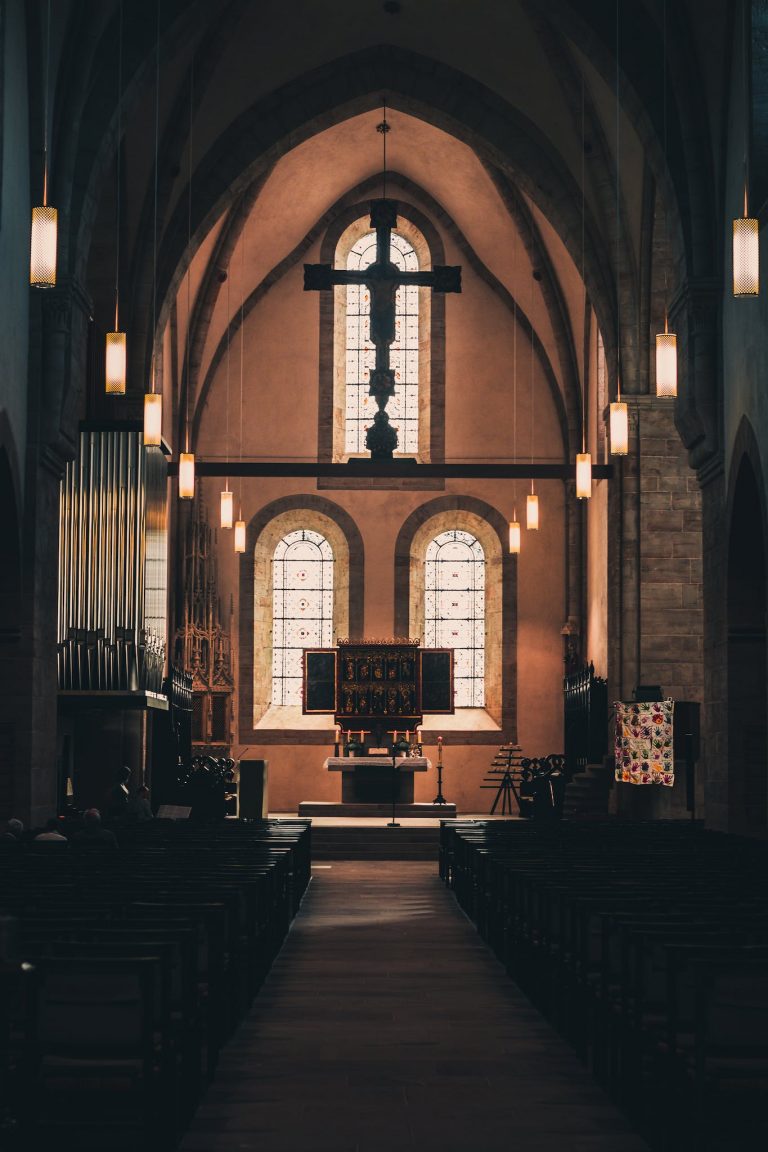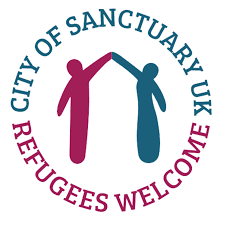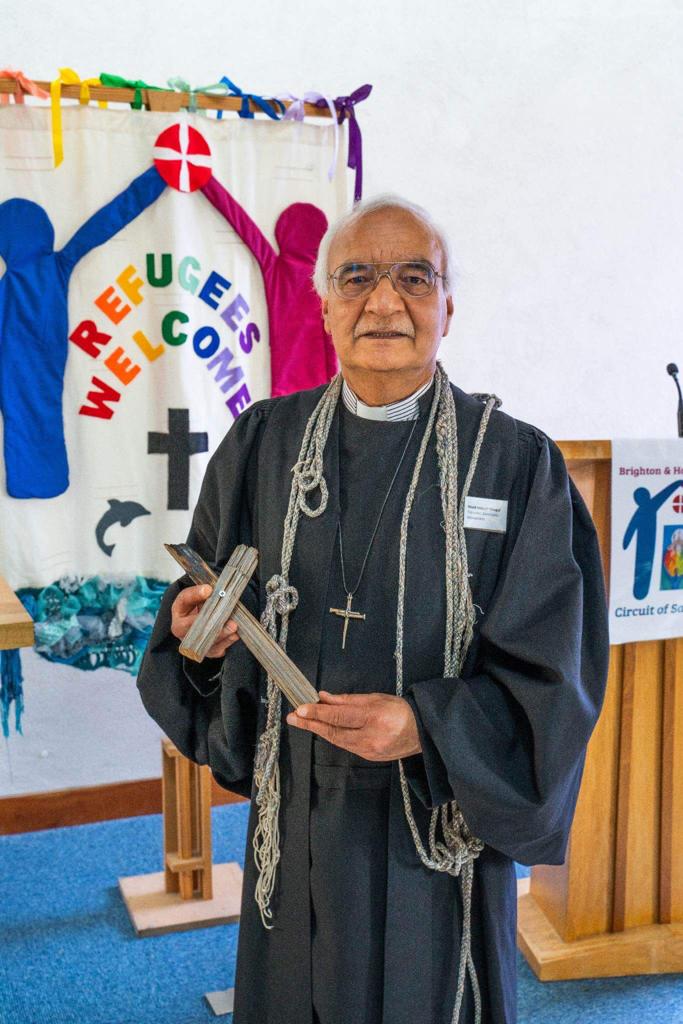Biblical Roots and Christian History
The roots of Sanctuary are thousands of years old, and have their basis in such diverse cultures as ancient Egyptian, Hebrew and Greek. The Hebrew tradition enshrined the experience of a formerly oppressed people into the legal code of their new society when 6 towns of refuge/Sanctuary were established according to the legislation set out in the Book of Numbers 35:6-34. These towns were able to give refuge to anyone, including a foreigner who was accused of manslaughter, thus preventing the automatic use of blood feud as a rough, ready and often indiscriminately unfair route to justice.
The Hebrew tradition provided the basis for the incorporation of Sanctuary into the life of Western European society through its adoption by the Christian Church; and with the transition of the Church from a persecuted sect into an officially recognised and promoted religion, Sanctuary became legally recognised, although always subject to certain restrictions, and often caught in the tension between the competing claims of Church and State over the boundaries of their spheres of authority.
The earliest mention of Sanctuary in England was in the code of laws issued by King Aethelbert in the years 600AD. Under Norman rule, there were 2 kinds of Sanctuary:
– a general right to Sanctuary which belonged to every church
– a particular right to Sanctuary which was granted to some cities by
Royal Charter.
The number of Sanctuaries were reduced to seven in the reign of Henry VIII, and in 1623, the general right to Sanctuary was abolished by statute law, although the basis of Sanctuary has always been moral.
Christian Sanctuaries, in early Church history, were for fugitive slaves. In Britain, the first Christian martyr, St Alban, was canonised because he was martyred for giving Sanctuary to a fleeing person.
The concept of Sanctuary re-emerged in the 20th Century, first in El Salvador, as a form of protection from the activities of ‘death squads’. From there it was taken up in the USA when churches sheltered Guatemalans and Salvadorians refused asylum.
In 1982, a Presbyterian Church in Arizona, unwilling to see people sent back to certain detention, became the first Church to offer Sanctuary. Scores more followed.
There have been sanctuaries for migrants in Germany, Switzerland, Denmark and Sweden as well as in the UK. The best known Sanctuary in UK was that taken by Viraj Mendis in a church in Manchester 20 years ago.
The law should safeguard human rights and also offer some flexibility. If it does not do so, people will do whatever they can to protect themselves. Many have taken Sanctuary in religious buildings.
Sanctuary as a Movement of Hospitality
In our times of widespread public hostility towards asylum-seekers, the challenge is to broaden the concept of Sanctuary, recognising that the most fundamental defence for excluded people is the creation of hospitable and supportive local communities. This is the aim of the City of Sanctuary movement in Sheffield – to make solidarity and hospitality toward asylum-seekers and refugees a part of the mainstream of life for our local communities.
In this it is similar to the idea of a ‘Fairtrade City’, in which a wide range of community groups and organisations make a commitment to using and selling fair-trade goods. A City of Sanctuary would be a place where significant numbers of schools, community groups, faith groups and cultural organisations, as well as local government, were publicly committed to offering hospitality and support to refugees and asylum-seekers. They might put this commitment into practice in many different ways – through offering friendship or advocacy, encouraging refugees’ involvement in their activities, or displaying public support, perhaps in the form of a sign outside their premises declaring ‘We welcome asylum-seekers and refugees.’
We recognise that asylum policy and decision-making must be decided at a national level, and that the power of local communities to defend individuals will often be limited. But within this legal framework there is the opportunity for local communities both to make the existing asylum system more humane for the asylum-seekers who live amongst us, and to counter some of the hostile public attitudes that drive government policy.
Sheffield already has an excellent record of support for asylum-seekers and refugees, and a diverse and thriving multicultural population. This makes it ideally placed to be the first city to adopt the goal of becoming a City of Sanctuary for people in need of safety from persecution. Other cities in the region and beyond may even follow our lead, helping to influence public attitudes and policy at a national level.
Following a meeting on 15th October 2005, to discuss the City of Sanctuary proposal, many organisations have already adopted the following resolution:
‘Our organisation recognises the contribution of asylum-seekers and refugees to the City of Sheffield, and is committed to offering hospitality to people who come here in need of safety from persecution. We support the goal of Sheffield becoming a recognised ‘City of Sanctuary’ for refugees and asylum-seekers.’
We call for support from Sheffield’s Faith Leaders from all Faiths, Political Leaders, Community Organisations, Educational Institutions and all people committed to offering hospitality and support to asylum seekers and refugees in our City.
Rev Dr Inderjit Bhogal & Craig Barnett
City of Sanctuary is supported by the Northern Refugee Centre, ASSIST, Church Action on Poverty in Sheffield, Hallam Diocesan Justice & Peace Commission, Student Action for Refugees, Sheffield Conversation Club, The Drum Community Media Centre, Victoria Hall Methodist Church, Christ Church Pitsmoor, and St. Cuthbert’s Fir Vale.




